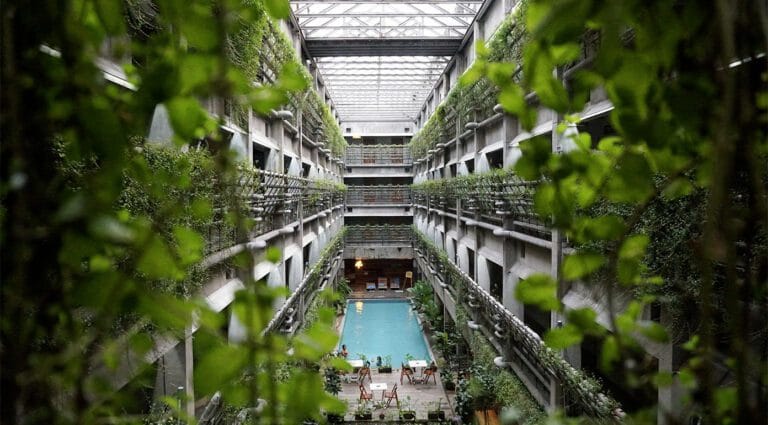Under the effect of a strengthened regulatory framework, Moroccan hospitality is required to green its practices by 2025. The frantic race for volume driven by mass tourism is over: the time is for sustainable transition, framed by a set of new standards and tax incentives.
In 2024, Morocco welcomed nearly 17 million tourists, confirming the strategic weight of the sector. However, this performance masks a profound transformation. Three major texts, which came into effect between January and June 2025, redefine the contours of the hotel model, with the goal of achieving carbon neutrality by 2050.
Three regulatory pillars for accelerated transformation
The law 52-21, enacted in January, imposes a 20% reduction in energy consumption by 2030 for hotels with more than 50 rooms, and requires 30% of the energy mix to come from renewable sources. Each establishment must also publish a certified carbon balance under penalty of sanctions that can reach up to 2% of revenue.
The decree 3.25-487, which came into effect in June, further tightens the requirements for waste management: 70% mandatory recycling, prohibition of single-use plastics, incentives for the recovery of organic waste, with a 15% reduction on the tourist tax for virtuous hotels.
Finally, a new national certification replaces the Green Key label. It imposes higher standards regarding local employment (80%), reuse of gray water, and regular energy audits. In return, certified establishments benefit from green financing and better international visibility.
Inspiring examples… but a challenge of accessibility
In Imlil, the Kasbah du Toubkal already operates completely autonomously thanks to a mix of renewable energies and local partnerships. Result: carbon footprint reduced by 45%, bookings up by 30%, and strengthened premium positioning. In Essaouira, Le Jardin des Douars focuses on short circuits, bioclimatic architecture, and outsourced waste management, generating notable savings and international recognition.
The government supports this dynamic with a set of aids: a 30% tax credit for solar equipment, ADEREE subsidies, and a Green Fund of 500 million dirhams dedicated to sustainable tourism.
An uneven transition according to the size of establishments
But the challenge remains high for small and medium-sized tourism enterprises, which are the majority in the national offer. With costs estimated between 1 and 3 million dirhams to transition to a green model, many struggle to keep up, especially in the absence of specialized skills in CSR or ESG outside major cities.
Morocco will also face increased competition in Africa, as Tunisia, Cape Verde, and Senegal are also accelerating in the sustainable tourism sector.
Between regulatory obligation and competitive leverage, the green transformation of the Moroccan hotel sector is underway, but its success will depend on its ability to engage all stakeholders, both small and large, in this strategic transformation.


